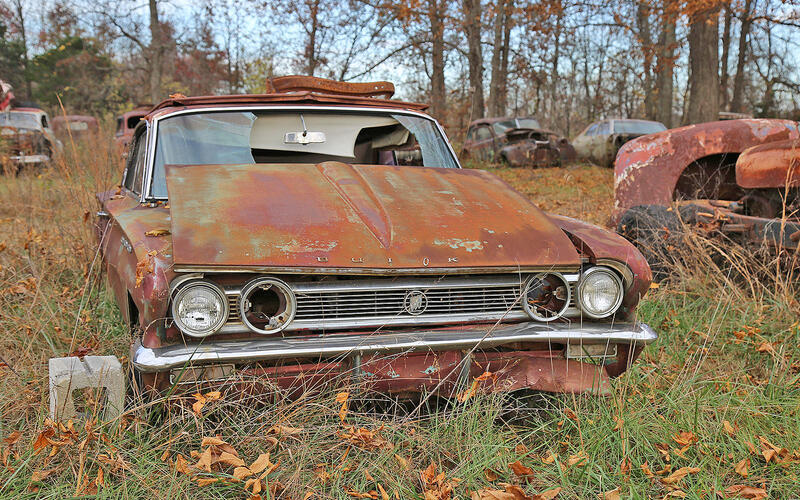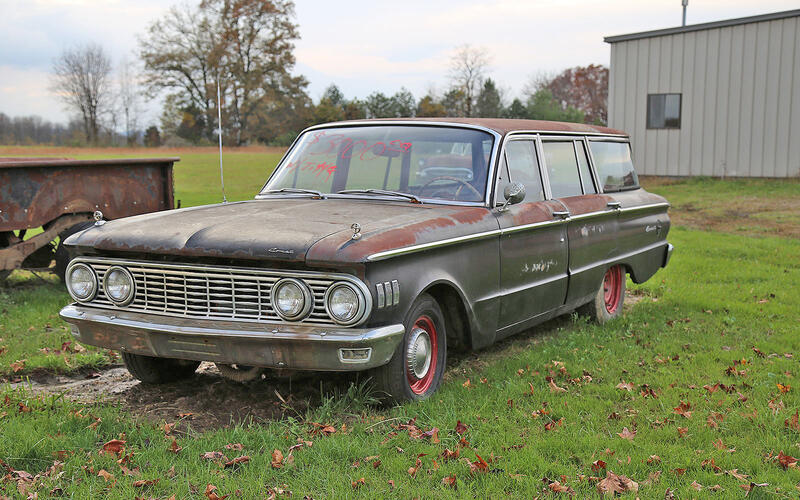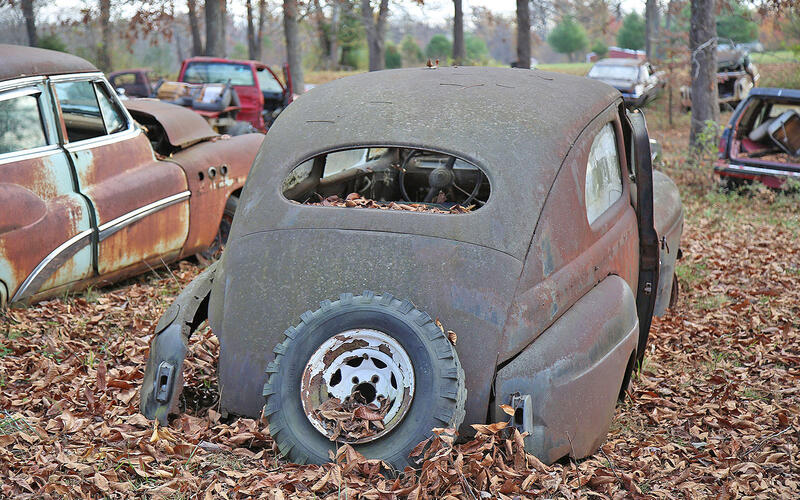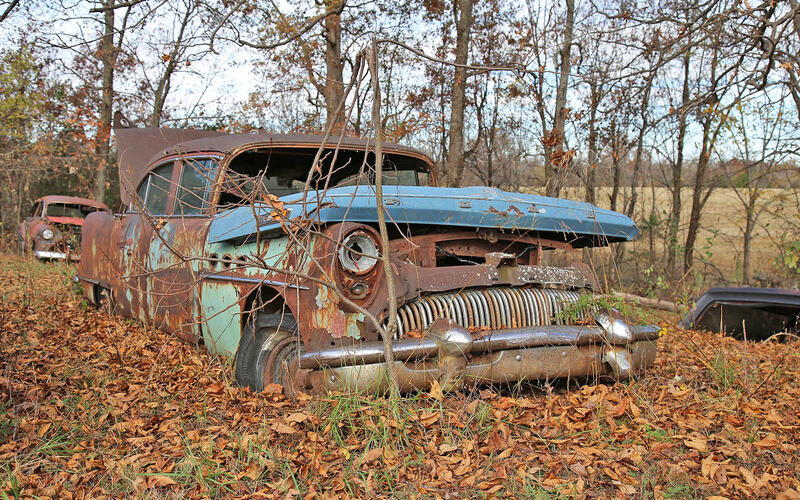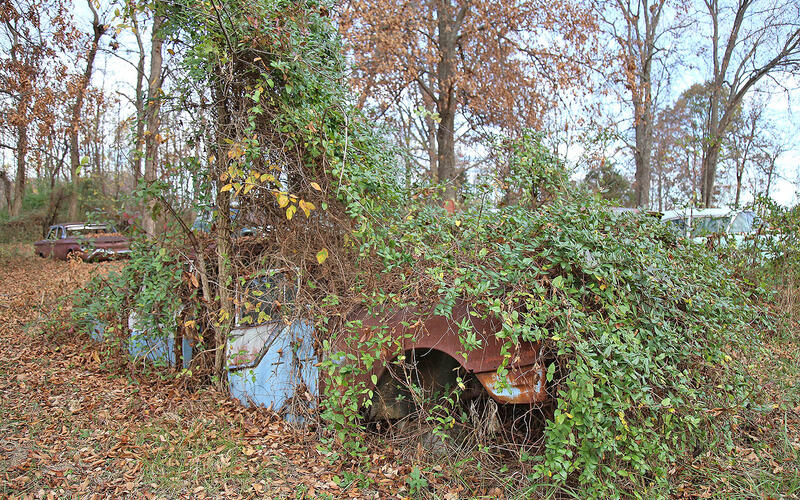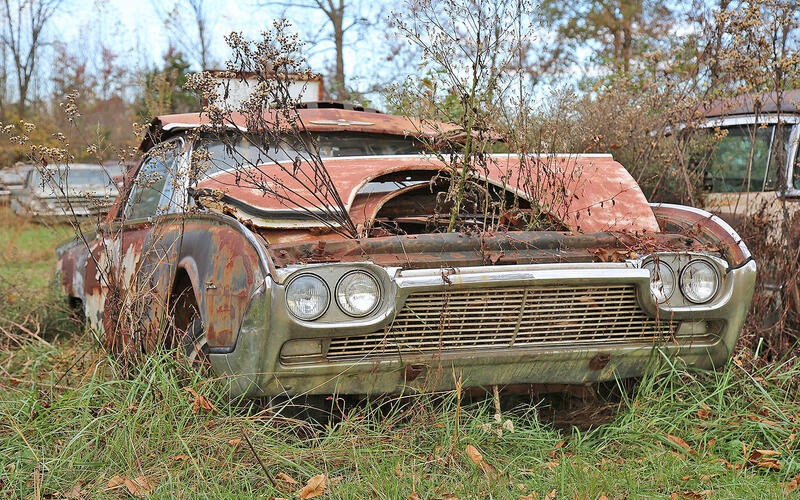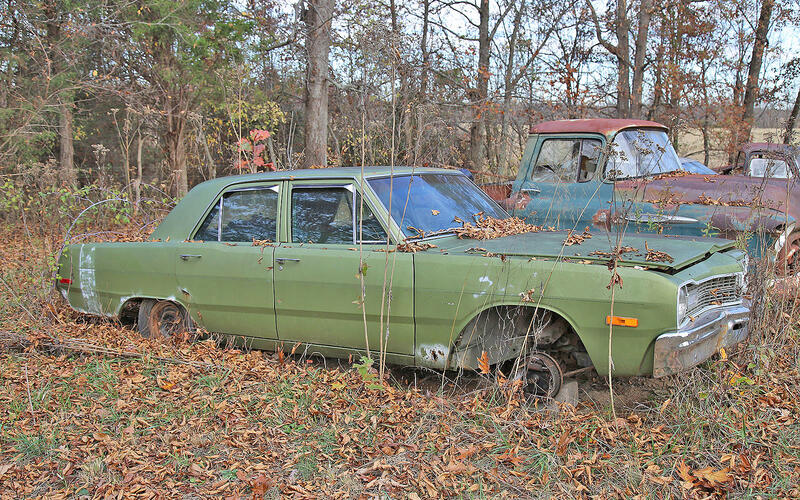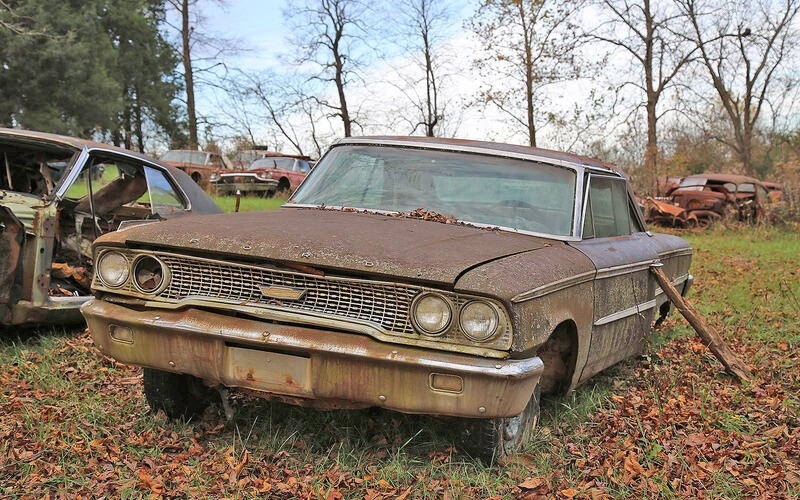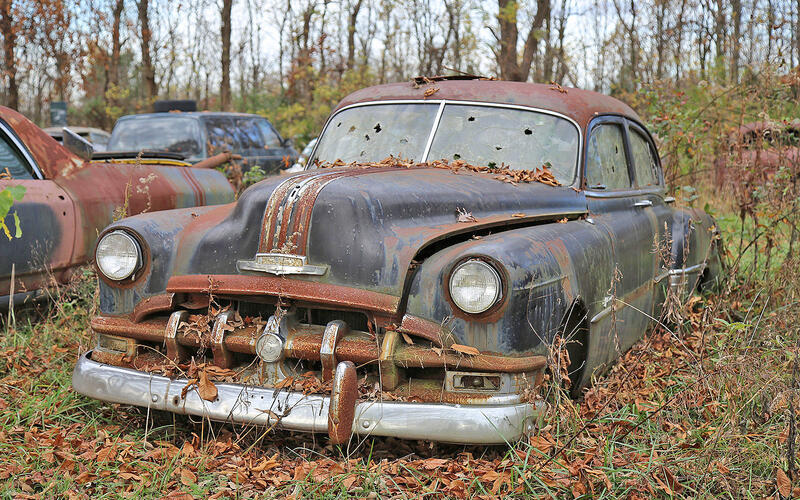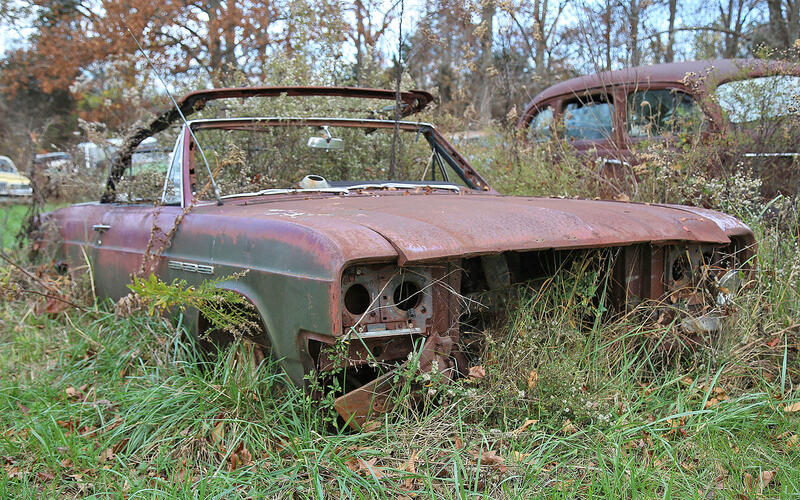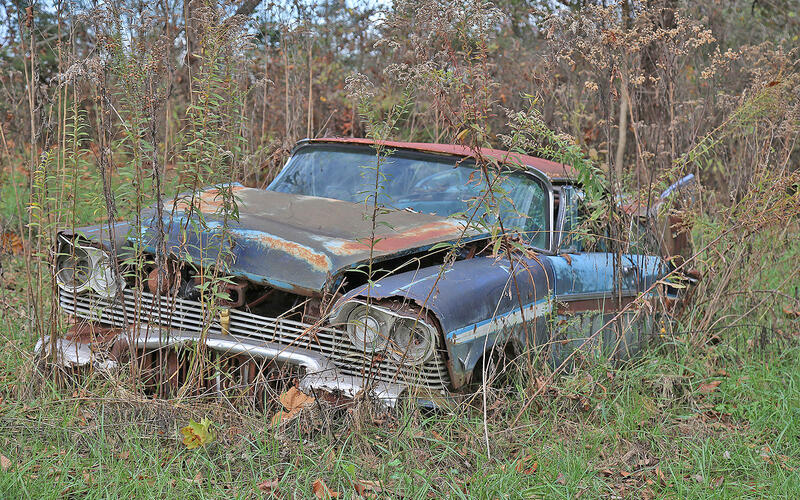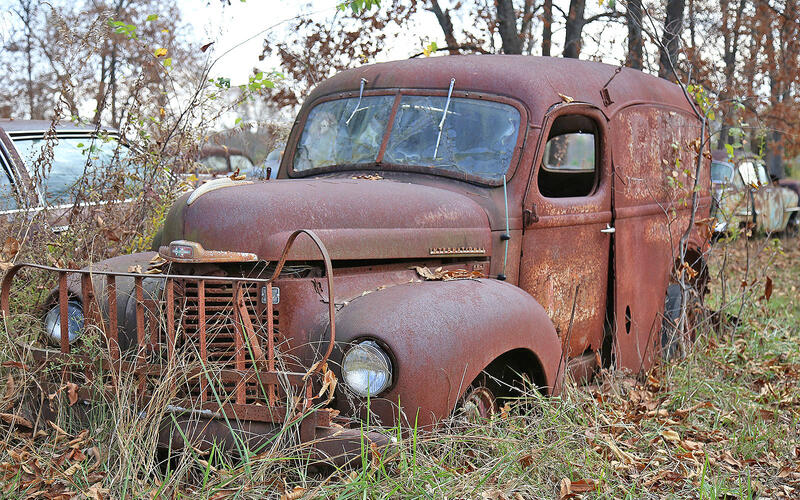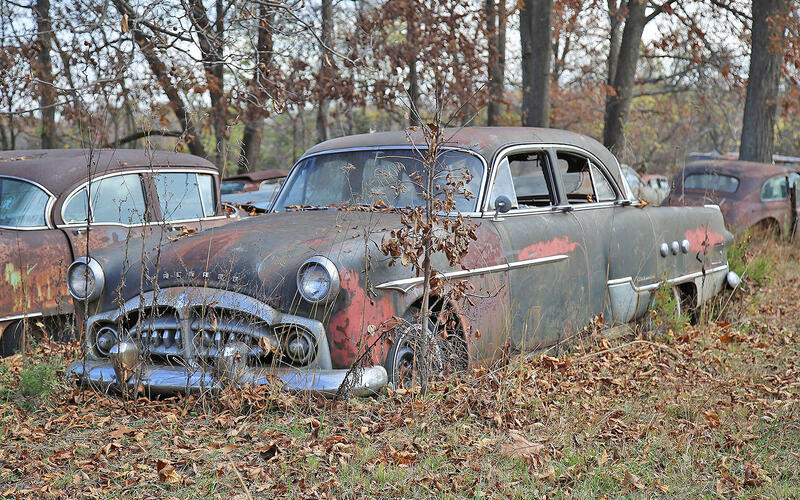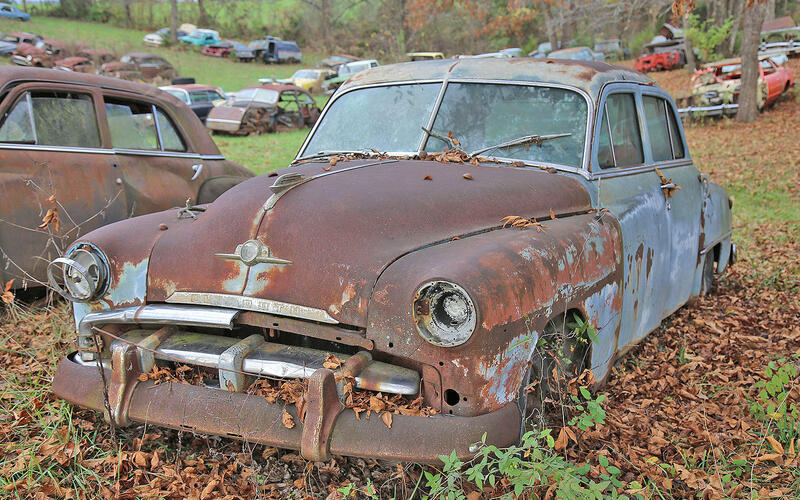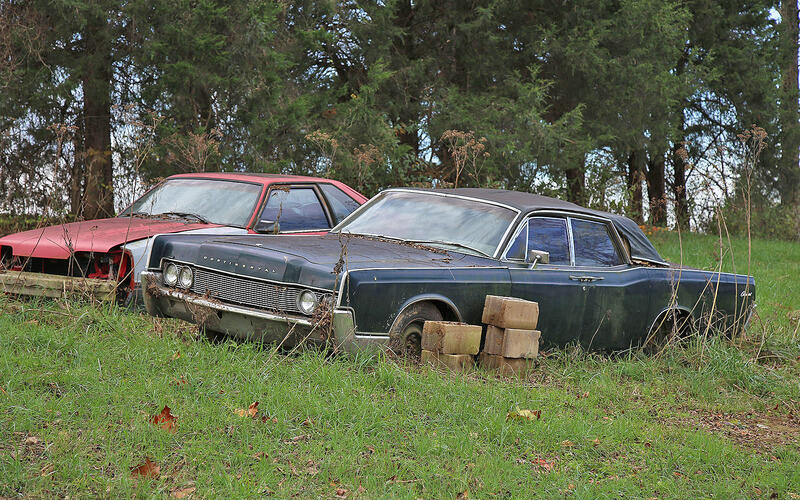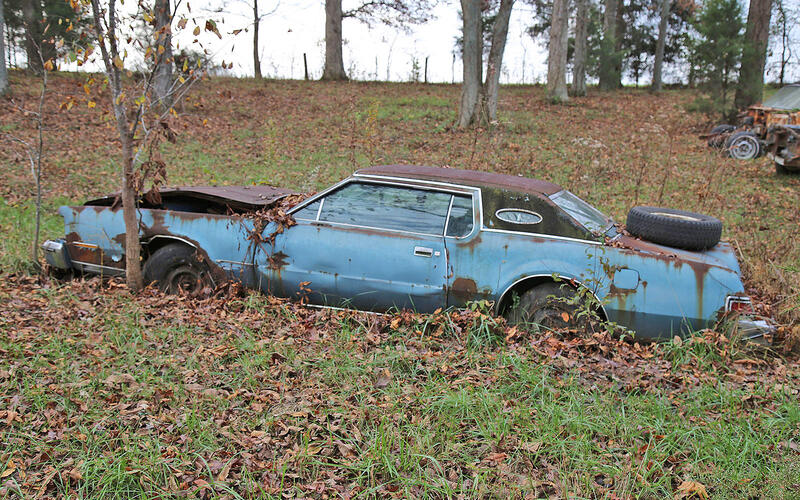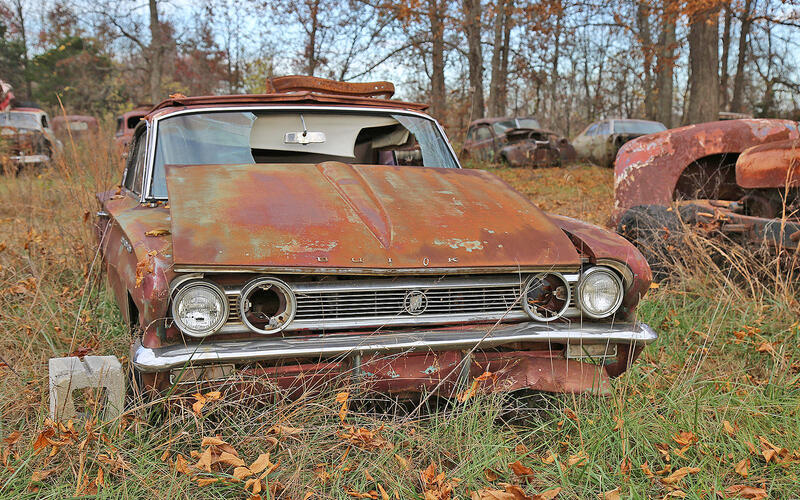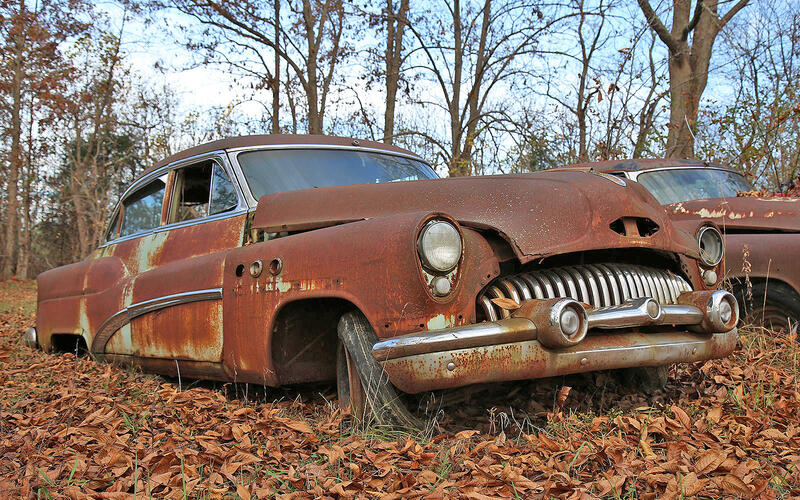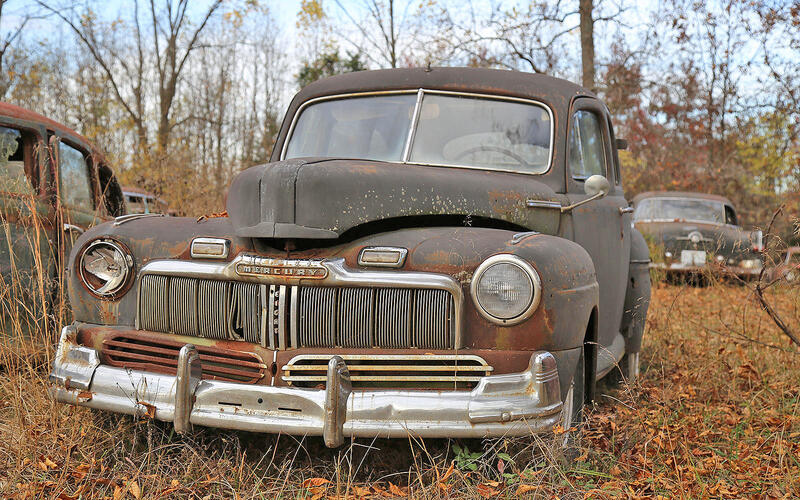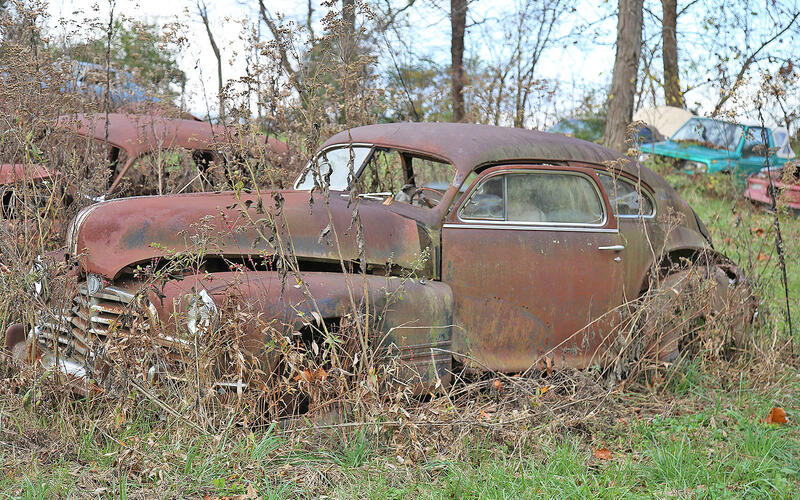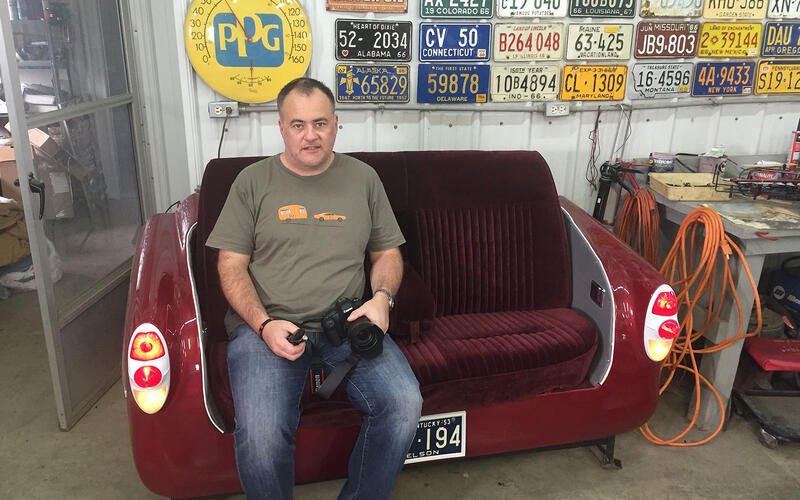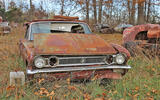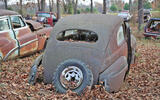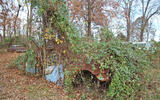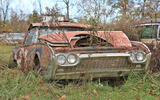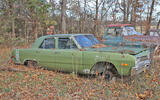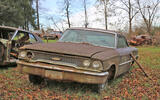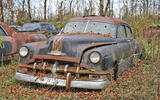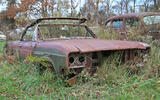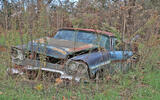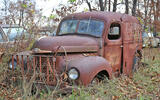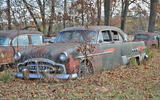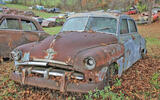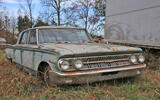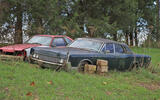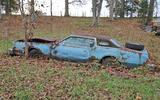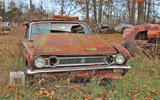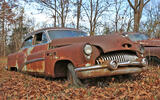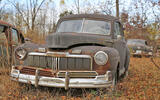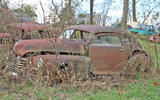 Slide of
Slide of
Loretto, Kentucky is in Bourbon County, and most visitors to the town are there to visit the historic Maker’s Mark distillery.
We won’t lie, we did too, but only after we’d dropped in on the fabulous Lyon’s Vintage Junkyard. Owned by car enthusiast David Lyons, the picturesque yard contains a few hundred desirable classics from the 1930s through to the 1970s.
The property was very well maintained, and unlike in some yards we’ve visited, there were no bits of mangled and twisted metal hiding in the grass, waiting to trip you up. The stock was treated with respect, with doors and boots generally kept closed, and engines covered. In fact, contrary to its name, in our eyes it was definitely more salvage yard than junkyard:
 Slide of
Slide of
MERCURY COMET - 1961
Lyon’s Vintage Junkyard always has a handful of restorable project cars parked at the front of the property, which on our visit included this tidy 1961 Mercury Comet station wagon. It had a $3000 price tag (which is roughly $650 more than what it cost new), and at that price, we bet it didn’t hang around for long. Of the 183,259 Comets sold that year, 22,165 were four-door wagons like this.
 Slide of
Slide of
FORD DELUXE - 1941
Our pre-Covid visit to Lyon’s Vintage Junkyard took place one morning in autumn, as you can tell from the leaves surrounding this forlorn 1941 Ford Deluxe.
 Slide of
Slide of
BUICK SPECIAL - 1954
The hood from a 1960’s Ford truck protects this 1954 Buick Special Deluxe sedan’s engine from the elements. It’s such an obvious thing to do, but you’d be amazed at how few yards take similar precautions to protect their cars.
Judging by the way it was sunk into the ground, it had probably been a resident of this place since the yard opened for business in the 1990s. More than 70,000 of these four-door sedans found buyers, making them Buick’s third most popular model after the Super Riviera and Special Riviera that year.
 Slide of
Slide of
PONTIAC - 1955
Whatever was hiding under the vines had definitely seen better days. It appeared to be so rusted that it had actually split into two sections, and had a tree growing through the middle. We’re going to guess that it’s a 1955 Pontiac Star Chief four-door sedan, one of 44,800 built that year.
 Slide of
Slide of
FORD THUNDERBIRD - 1961
The Ford Thunderbird was redesigned for 1961, and the third-generation bullet-like styling was well received by the public. This was reflected in the sales figures, with 73,051 of them finding buyers. Although this bird’s flying days were definitely behind it, it still had a fine selection of parts to offer.
 Slide of
Slide of
DODGE DART - 1974
We spent a while researching what sort of special edition this 1974 Dodge Dart was, before it occurred to us that the white stripe on its rear had been hand-painted by a previous owner.
The Dart was part of the Dodge line-up between 1960 and 1976. The first generation (1960-1961) was a full-size car, but it shrank to mid-size for the second generation (1962), before transforming into a compact for the rest of its life.
 Slide of
Slide of
FORD GALAXIE 500 - 1963
Does anyone else have an urge to polish this 1963 Ford Galaxie 500 two-door hardtop? It would probably have looked pretty good with decades of grime removed. Note how the car’s door had been wedged shut to avoid the interior getting damaged. This is something we rarely see in a salvage yard.
 Slide of
Slide of
PONTIAC CHIEFTAIN - 1950
It would appear that at some point, this 1950 Pontiac Chieftain four-door sedan had been shot at. Either that or it was used as a getaway car in a bank robbery. If it was the latter, then we don’t fancy the chances of the criminals actually getting away, seeing as even the eight-cylinder cars took the better part of 20 seconds to reach 60 mph.
 Slide of
Slide of
BUICK SPECIAL CONVERTIBLE - 1965
Ordinarily Lyon’s Vintage Junkyard would use a car hood, or some tarpaulin, to replace a missing ragtop. But in the case of this 1965 Buick Special convertible it wasn’t worth it, as the interior had already rotted away long before the car arrived here.
Of the 600,000-plus cars built by Buick that year, just 3365 were Special two-door convertibles, making this a real rarity.
 Slide of
Slide of
PLYMOUTH BELVEDERE - 1958
During our visit, we spotted no less than three similarly aged Belvederes at Lyon’s Vintage Junkyard, a pair of 1957s (including this one) and a 1958. The Belvedere name was used for top-trim Plymouths from 1954 to 1965.
The best known Plymouth from this era was the 1958 Fury that had a starring role in the John Carpenter-directed film Christine, based on a Stephen King novel. In total 28 cars were used during the filming, many of which were actually Belvederes. Most of them ended up looking somewhat like this…
 Slide of
Slide of
INTERNATIONAL KB SERIES
The International KB Series developed a reputation for being a rugged and reliable workhorse. That said, like any other commercial vehicle, they tended to be treated roughly, so didn’t have a great survival rate. Panel vans like this KB 3, which was probably built between 1947 and 1949, were unusual back in the day, and are very rare today.
Unfortunately, rust had taken a hold, and the chances of its survival were slim.
 Slide of
Slide of
PACKARD PATRICIAN 400 - 1951
Just 9001 Packard Patrician 400s were sold in 1951, which made this survivor a real rarity. The car’s eight-cylinder engine produced 155hp, taking it to 60 mph in a respectable 16.6 seconds. The engine was matched to the Ultramatic hydraulic torque converter transmission, which had been launched two years earlier. At the time it was the only automatic transmission produced solely by an independent automaker with no outside help.
 Slide of
Slide of
PLYMOUTH CRANBROOK - 1952
The Plymouth Cranbrook was named after Detroit’s Cranbrook Drive, which together with Concord Street and Cambridge Avenue (both also Plymouth names from the same era), was located close to the factory. The model, which was built from 1951 to 1953, replaced the Special Deluxe. This four-door version was built in 1952.
 Slide of
Slide of
MERCURY MONTEREY - 1963
This 1963 Mercury Monterey features the distinctive reverse-slanted ’Breezeaway’ power-operated, roll-down rear window. Of the 28,388 Montereys built that year, the hardtop sedan was the slowest seller, with just 1692 people stumping up the $2995 needed to drive one out of the showroom.
This particular example was in great condition, and will surely have yielded plenty of hard-to-find spare parts.
 Slide of
Slide of
LINCOLN CONTINENTAL - 1967
Look at the bulges that were under this 1967 Lincoln Continental four-door sedan’s vinyl roof. We can only imagine what horrors must have been lurking underneath to make it so misshapen…
This wasn’t a good year for Lincoln, which found itself competing with new designs from luxury automobile rivals Cadillac and Imperial. As a result, sales dropped by 9000 units on the previous year, reaching 45,667.
 Slide of
Slide of
LINCOLN CONTINENTAL MKIV - 1974
With its opera windows, continental spare tire-shaped trunk lid and vinyl roof, the Lincoln Continental MkIV (1972-1976) was the epitome of 1970s personal luxury. It was a good seller too, beating its Cadillac Eldorado rival in every year of production. This is a 1974 example, one of 57,316 of the two-door hardtops built that year. In contrast some 40,000 Eldorados rolled off the line.
 Slide of
Slide of
BUICK SKYLARK - 1961
The luxury trim 1961 Special Skylark, which was based on a two-door saloon, arrived in the middle of the year. It had several unique features, including its own taillight housings, and sported three ventiports on each fender. Power came from a 3.5-litre V8, which was good for 185 hp, and propelled the Skylark to 60 mph in 8.2 seconds.
Buick produced the Skylark on and off for 46 years, spanning six generations.
 Slide of
Slide of
BUICK SUPER - 1953
While its body and eyesight might have been failing, there was certainly nothing wrong with this old timer’s dentures. It’s a 1953 Buick Super four-door sedan, although accessing those four doors might have been challenging without door handles…
With 488,755 sales, 1953 was a great year for Buick, which at the time was the US’s fourth most popular marque - behind Chevrolet, Ford and Plymouth. But by the end of the decade it would have dropped to seventh place.
 Slide of
Slide of
MERCURY EIGHT - 1947
Although a bit rough around the edges, this Mercury Eight looked too good to break for parts. If you can tell whether it’s a 1947 or 1948 example, then you’re better than us. As far as we’re aware, the key difference was a redesigned set of dial faces, and we forgot to check.
That said, seeing as considerably more were sold in 1947 (86,363 versus 50,268), the odds were in favour of it being an older car.
 Slide of
Slide of
PONTIAC STREAMLINER - 1946
During our visit, we saw the lengths yard owner David Lyons was willing to go to in order to rescue classic cars from the crusher. Even if they only had a handful of useable parts left, he did his best to save them, often dragging them out of the undergrowth, and bringing them back to the comparative safety of his yard.
This 1946 Pontiac Streamliner two-door sedan coupe was one of the more complete cars, and still had plenty of useful parts.
 Slide of
Slide of
About the author
British automotive journalist Will Shiers has been photographing abandoned American cars for 35 years. He has visited all 50 states on his tin-hunting trips, exploring barns, fields, deserts, ghost towns and salvage yards, while searching for hidden treasures. Will has been contributing to car magazines for three decades, and is the author of Roadside Relics - America’s Abandoned Automobiles.
The author gets comfortable on a 1953 Chevrolet sofa in the Lyon’s Vintage junkyard’s office.
If you enjoyed this story, please click the Follow button above to see more like it from Autocar
Access control:
Open
Include in Apple News:

